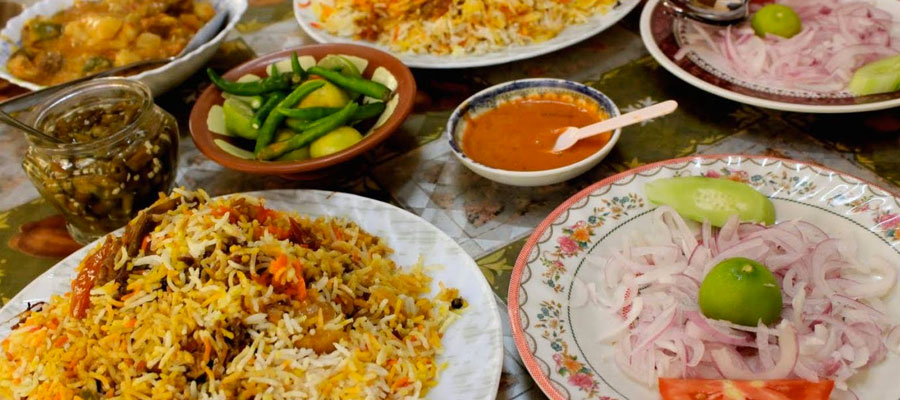
The history of Oman is made of exchanges, trade, contacts with other cultures: a crossroads that is reflected in the multi-ethnic soul of its cuisine, composed of Middle Eastern, Asian and African influences.
Beef or chicken curry (called “chicken masal”) and basmati rice, present at every meal as a substitute for bread and usually seasoned with lemon, ginger or vegetables, are clearly Indian. Along with rice is always the hummus, chickpea cream typical of the Middle East.
The shuwa, a traditional dish prepared especially during the holidays, is based on lamb or spicy goat, wrapped in banana leaves and cooked on the grill.
Meat lovers should try the msanif, meatballs flavored in a pan, and the shawarma, similar to kebab, a large Arab bread that wraps chicken, lamb, tomatoes and salad.
In a country overlooking the sea you cannot miss the fish: we recommend trying the samak bil narjeel, consisting of sardines and tuna marinated in chilli, lime, ginger and salt. Everything is then cooked in a sauce made with garlic and coconut milk.
Being a Muslim country, in Oman it is very difficult to find alcohol, if not in licensed premises or in large international hotels. The lemon mint, fresh lemon juice with plenty of mint, and lassi, a yoghurt drink with various flavors, are the best drinks to tackle the sultry Omani climate.
Among the most loved sweets by the Omani are the umm ali, warm and thick cream made with honey, dates, almonds, pistachios and halwa, cake with almonds and walnuts flavored with rose water, cumin, saffron and cardamom.
Oman, then, is a paradise for fruit lovers: in the country, thanks to the tropical climate, grow pineapples, white melons, watermelons and sweet miniature bananas.
And after dessert it’s coffee time! Attention, however: the Omani coffee is very strong and flavored with cardamom. Tradition wants to drink it accompanied by dates to sweeten it: do not ask for sugar!




